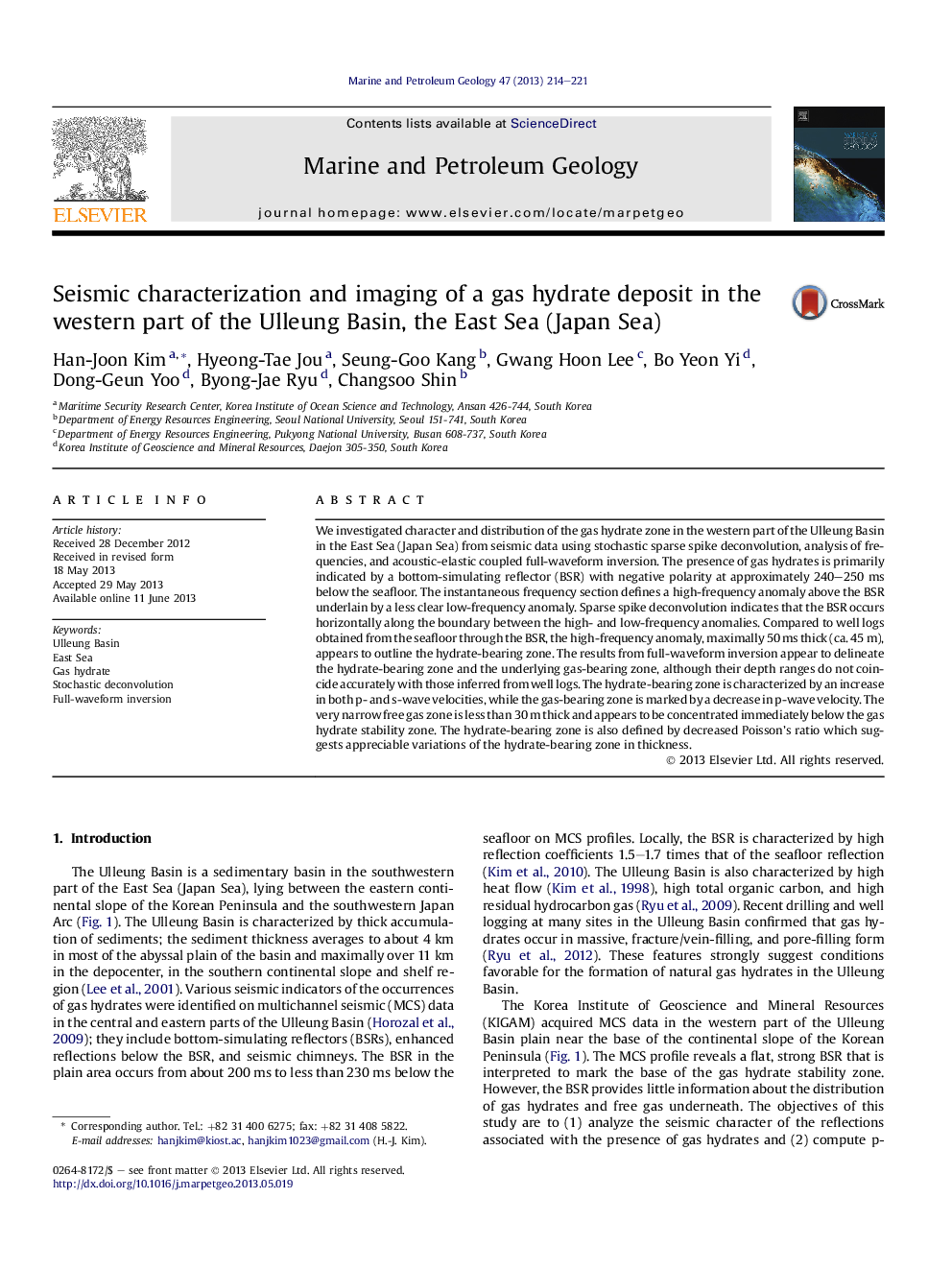| کد مقاله | کد نشریه | سال انتشار | مقاله انگلیسی | نسخه تمام متن |
|---|---|---|---|---|
| 4695756 | 1637177 | 2013 | 8 صفحه PDF | دانلود رایگان |
We investigated character and distribution of the gas hydrate zone in the western part of the Ulleung Basin in the East Sea (Japan Sea) from seismic data using stochastic sparse spike deconvolution, analysis of frequencies, and acoustic-elastic coupled full-waveform inversion. The presence of gas hydrates is primarily indicated by a bottom-simulating reflector (BSR) with negative polarity at approximately 240–250 ms below the seafloor. The instantaneous frequency section defines a high-frequency anomaly above the BSR underlain by a less clear low-frequency anomaly. Sparse spike deconvolution indicates that the BSR occurs horizontally along the boundary between the high- and low-frequency anomalies. Compared to well logs obtained from the seafloor through the BSR, the high-frequency anomaly, maximally 50 ms thick (ca. 45 m), appears to outline the hydrate-bearing zone. The results from full-waveform inversion appear to delineate the hydrate-bearing zone and the underlying gas-bearing zone, although their depth ranges do not coincide accurately with those inferred from well logs. The hydrate-bearing zone is characterized by an increase in both p- and s-wave velocities, while the gas-bearing zone is marked by a decrease in p-wave velocity. The very narrow free gas zone is less than 30 m thick and appears to be concentrated immediately below the gas hydrate stability zone. The hydrate-bearing zone is also defined by decreased Poisson's ratio which suggests appreciable variations of the hydrate-bearing zone in thickness.
Final models for the hydrate-bearing structure computed by full-waveform inversion of seismic data. (a) P-wave velocity, (b) s-wave velocity, (c) density, and (d) Poisson's ratio. P-wave velocity and density logs from the UBGH 2-6 well are superposed at their locations in (a) and (c), respectively. P-wave velocity and density compared with well logs in the rectangles in Figure 7a and c, respectively, are highlighted in the insets.Figure optionsDownload as PowerPoint slide
Journal: Marine and Petroleum Geology - Volume 47, November 2013, Pages 214–221
